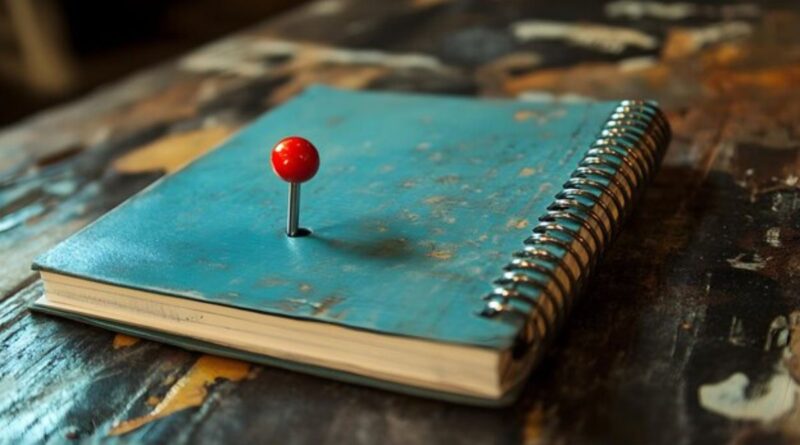Safety Pin Story: A Look at Its History and Evolution
The safety pin is more than just a simple piece of metal. It’s an everyday object that has woven its way through the fabric of history, culture, and fashion. While it might seem unassuming at first glance, this small yet mighty tool has served countless purposes over the years—from securing garments to making bold statements in art and activism. As we delve into the fascinating journey of the safety pin, you’ll discover how it transformed from a humble fastening device into a symbol of unity and support across various movements. Join us as we explore its rich history and evolving significance in our lives today!
A Brief History of the Safety Pin
The safety pin, a simple yet ingenious invention, has roots that stretch back to ancient times. Its design is credited to the American inventor Walter Hunt in 1849. He created it for practical purposes—to hold fabric together without causing harm.
Initially made from bronze and steel, this little device quickly gained popularity across various industries. It was invaluable for the garment industry, allowing quick repairs and adjustments.
By the late 19th century, safety pins were mass-produced. They became a staple household item due to their affordability and utility.
As functionality reigned supreme during its early years, few could have predicted how versatile this small tool would become over time. From securing diapers on babies to serving as an accessory in haute couture fashion shows, the journey of the safety pin reflects both ingenuity and adaptability throughout history.
The Evolution of the Safety Pin: From Functional Tool to Fashion Statement
The safety pin started as a simple tool, designed for practicality. Its primary function was to hold fabric together securely. This humble object quickly became indispensable in households everywhere.
As time passed, the safety pin transcended its basic utility. Designers began to recognize its aesthetic potential. No longer just an accessory for mending clothes, it transformed into a bold fashion statement.
In the hands of artists and designers, the safety pin appeared on runways and red carpets alike. It adorned everything from punk rock outfits to haute couture creations. The juxtaposition of its utilitarian origins with high fashion created a fascinating dialogue within style circles.
Today, it’s not unusual to see safety pins used creatively in jewelry or art installations. They symbolize rebellion and individuality while maintaining their charm as everyday items that resonate across generations.
Creative Uses of Safety Pins in Fashion and Art
Safety pins have transcended their original purpose to become a canvas for creativity in fashion and art. Designers often incorporate them into garments, crafting bold statements that challenge traditional aesthetics.
In the world of haute couture, safety pins can transform a simple outfit into an edgy masterpiece. Think of iconic pieces like those worn by punk rock legends, where these tiny tools symbolized rebellion and nonconformity.
Artists also find inspiration in safety pins. They create intricate sculptures or installations that use this everyday item as both medium and subject. The juxtaposition of something so utilitarian with high art sparks conversations about functionality versus beauty.
Fashion enthusiasts experiment too, using safety pins to customize thrifted finds or create unique accessories. A cluster of safety pins on a denim jacket can tell personal stories while adding texture and flair. This versatility is what makes the humble safety pin truly remarkable in contemporary culture.
Controversies Surrounding the Safety Pin
The safety pin, while often seen as a simple tool, has sparked various controversies over the years. One notable instance arose during political movements where the pin became a symbol of resistance and support. Critics argued that using it as a fashion accessory diluted its meaning.
Another point of contention is its appropriation in social justice contexts. Some activists view wearing a safety pin as performative rather than genuinely supportive. This debate raises questions about intentions and authenticity in activism.
Moreover, the safety pin’s role in fashion can sometimes overshadow serious discussions about inequality and oppression. When worn casually without understanding its implications, it risks trivializing important issues.
These complexities make the safety pin an intriguing subject within both cultural discourse and personal expression. Its status continues to evolve amidst differing interpretations and societal dynamics.
How the Safety Pin Has Become a Symbol of Solidarity and Support
The safety pin transcends its humble origins as a mere fastening device. In recent years, it has emerged as a powerful symbol of solidarity and support.
During times of crisis or social unrest, people have embraced the safety pin to signal their commitment to inclusivity and protection. Wearing one sends a message: “I stand with you.” It became particularly prominent following significant global events where marginalized communities faced threats.
Activists adorned themselves with these simple pins to express empathy for those in need. The act is both subtle and profound, allowing individuals to show their stance without uttering a word.
Beyond protests and movements, artists have creatively incorporated safety pins into their work, amplifying messages of unity through art. This transformation from tool to emblem illustrates how even the simplest objects can carry deep meanings in our interconnected world.
Conclusion: The Enduring Impact of the Simple yet Versatile Safety Pin
The safety pin, a seemingly simple object, has woven itself into the fabric of our lives. Its journey from a functional tool to a powerful symbol highlights its versatility and cultural significance. Initially designed for practicality, the safety pin evolved to embrace various roles in fashion and art.
From securing garments to making bold statements on runways, this tiny accessory resonates with creativity. It even sparked conversations around social issues and solidarity movements, embodying support during challenging times.
Its enduring impact is not just about function or style; it reflects human resilience and adaptability. The safety pin continues to inspire innovation while serving as an emblem of unity. As we navigate through life’s complexities, this small yet mighty tool remains relevant—a testament to the power of simplicity in shaping culture and community over time.




